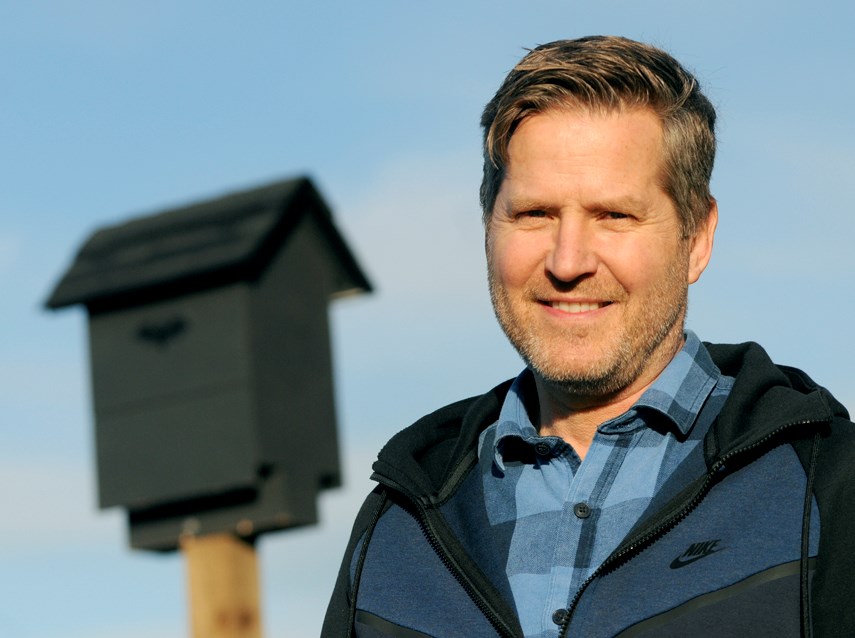James Watson is in a race against time to save a species that suffers an undeserved reputation.
Beyond the “ick” factor, bats can carry rabies and some distant species may have been one of the vectors of SARS-CoV-2, the virus that causes COVID-19. But they play a critical and underappreciated role in maintaining our ecosystem, Watson says, and there is a major threat looming.
“It's really unfortunate they suffer from this PR [public relations] problem,” he said. “They are spectacularly evolved creatures, if you think about their echolocation, their ability to hunt.”
White-nose syndrome
Sadly, there’s a storm coming that our bats aren’t even aware of. White-nose syndrome, a fungal disease that attacks and kills bats while they hibernate, has been marching across the continent, wiping out bat populations with a mortality rate of more than 90 per cent. It arrived in New York State on the hiking boots of European tourists.
“In the east, they figure it may take 1,000 years for some of those bat populations to recover, Watson said. “After white nose hit, there's nothin’. Zip. Zero. They're gone.”
So far, white-nose syndrome hasn’t been detected this far north on the West Coast but it is in Washington State, which means it’s only a matter of time before it arrives here.
Installation almost complete. If you visit #westVancouver this summer, be sure to check out Ambleside beach pond. Bats galore!@albertabats @BurkeMtnNats @Christina_Davy @Cori_Lausen @batsborealis @wcscanadabats @kirkmyotis @pintobat pic.twitter.com/HQQpucBB0z
— James Watson (@PapaJWatson) March 16, 2021
It’s why Watson and the BC Community Bat Program are trying to give the species a fighting chance at recovery. The North Vancouver naturalist recently installed a new hand-built home for bats next to the Ambleside Park duck pond.
“It's on our doorstep,” Watson said. “If you're trying to preserve a population, and you know that you're going to lose 90 per cent… then you’ve got to give whatever ones survive a place to live, so that hopefully they can start to rebuild the population.”
Another housing crisis
Our pattern of development is exacerbating the problem. As single-family lots are cleared of trees and older homes redeveloped into hermetically sealed boxes, bats are losing some prime habitat, Watson said.
With humans being responsible for the threats, we also have an obligation to help in their recovery, Watson reasons.
“They depend a lot on us,” he said.
Bats looking for North Shore real estate
Watson and the BC Community Bat Program are looking for allies – especially people with properties that would be suitable bat “maternity wards” like the one he’s recently installed in Ambleside.
But not just any roost will do. By necessity, bats are highly selective about where to live, especially females responsible for raising pups. The temperature, humidity and access to the sun have to be just right in order for the pups to survive. From the time they are born, they have only three months to learn to fly and start fattening up for hibernation.
The Ambleside Pitch and Putt has all that and, using a thermal imaging camera after dark, Watson has seen the pond is a veritable smorgasbord for bats.
“It’s just a biodiversity bomb. It's unbelievable, the bat activity that's there in the summer. It's just a spectacular feeding site,” he said.
The Ambleside bat house isn’t Watson’s first one. He’s got another in the Mackay Creek estuary that just got its first residents last year. And he’s built another “bat condo” the size of a doghouse the District of West Vancouver has agreed to install in Hugo Ray Park.
“This is going to be the biggest one on the North Shore by a long shot. It may be the biggest one in the Lower Mainland,” he said.
How you can help
It’s unfair to weigh a species’ usefulness to humans when deciding whether they are deserving of protection, but it so happens, bats are very good if unappreciated friends to two-leggeds. A healthy bat can consume its weight in mosquitos and other bugs each day, Watson said.
“It's hard for people to quantify the implications of losing important keystone species like that but it can't be good,” Watson said. “The insect population would quickly come out of balance.”
It’s a sentiment echoed by Danielle Dagenais, BC Community Bat Program regional co-ordinator.
“They're helping our farmers. They're helping our forests by consuming a vast number of insects,” she said. “The bats are out there helping us every summer, so why not give back to them during that time and allow them to have somewhere to raise their young?”
Anyone who spots bats seemingly early out of hibernation, either alive or dead, is asked to report them to the Bat Program as that may be a sign of white-nose syndrome. Reports can be sent to the organization through its website, by email or by calling 1-855-922-2287 ext. 11.

